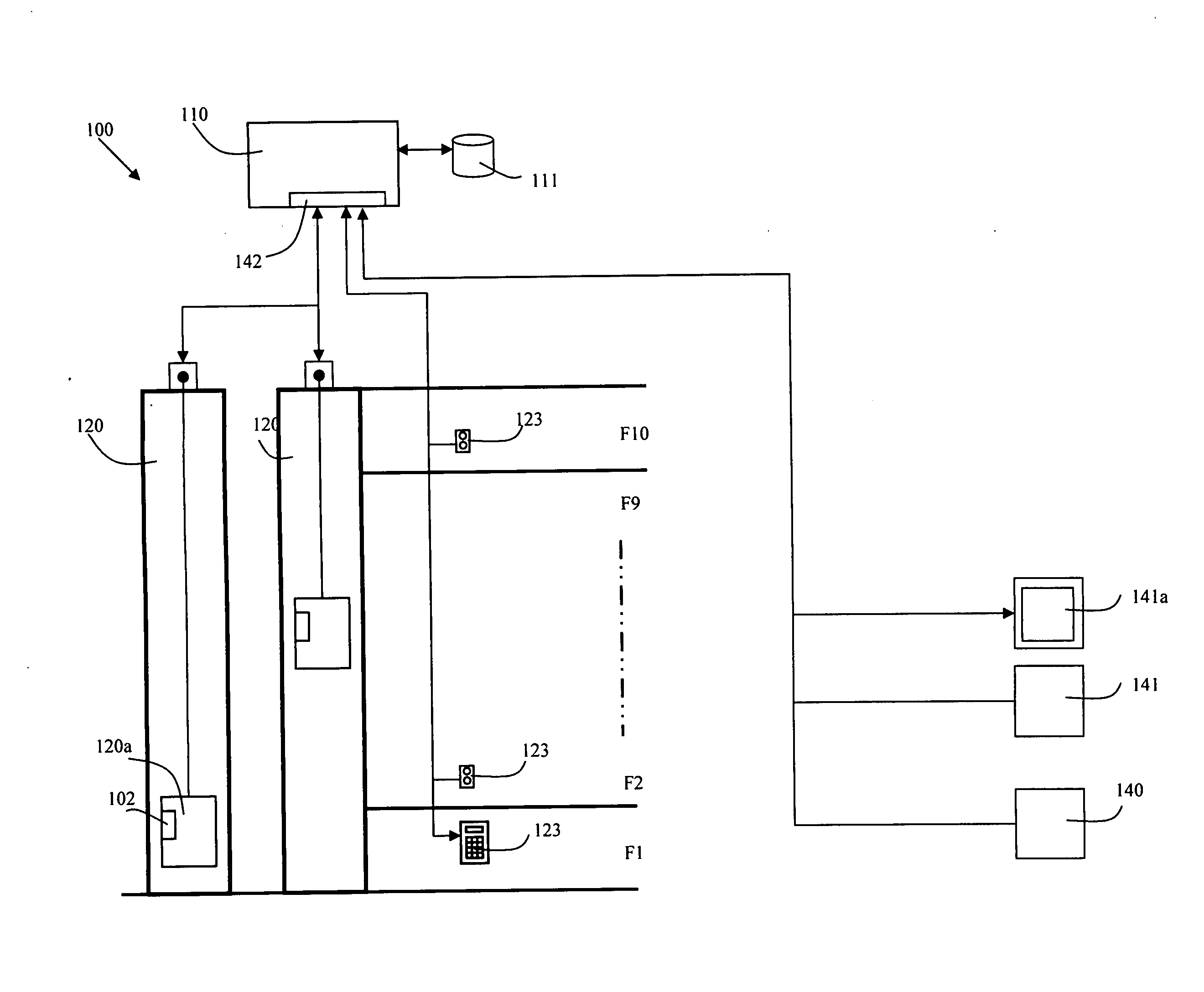Elevator system
a technology of elevator system and elevator, applied in the direction of elevator, computer control, instruments, etc., can solve the problems of inaccurate passenger traffic forecasts, hardly capable of anticipating future passenger traffic,
- Summary
- Abstract
- Description
- Claims
- Application Information
AI Technical Summary
Benefits of technology
Problems solved by technology
Method used
Image
Examples
example 2
[0047] A passenger arriving in the parking hall by car is identified from the registration number plate of the car, and this identification data (individualized hint) is sent to the elevator system. On the basis of the identification data, e.g. the registration number of the car, the elevator system determines the destination floor that the passenger is likely to be heading for. The elevator system orders an elevator car to the parking hall. If the elevators serving the parking hall do not serve the assumed destination floor of the passenger, then the hint is also transmitted to another elevator group, which serves the destination floor in question. The other elevator group records the hint and parks an elevator car at a transfer floor, e.g. at the entrance lobby, if there is already a vacant elevator at the entrance lobby. When the passenger comes to the parking hall elevators and inputs a call in the elevator car to the transfer floor, this results in the transmission of an adjust...
example 4
[0049] A number of people arrive at a stop on the building premises by public transport means, e.g. by bus, subway train, railway train or airplane. The stop is provided with an observation point, e.g. a camera arrangement, which estimates the number of people leaving the transport means and transmits this piece of information as a hint (general hint) to the elevator system. The elevator system determines the number of potential elevator passengers and, based on the forecast, orders one or more elevator cars to the floor at which the stop is located.
[0050]Example 5. A building has several elevator banks serving the entrance lobby. Provided in conjunction with the door leading into the entrance lobby are an observation point and a signal device. When the elevator system discovers that the elevator bank closest to the observation point is becoming congested, it guides the potential elevator passengers by means of the signal device to another, less congested elevator bank.
PUM
 Login to View More
Login to View More Abstract
Description
Claims
Application Information
 Login to View More
Login to View More - R&D
- Intellectual Property
- Life Sciences
- Materials
- Tech Scout
- Unparalleled Data Quality
- Higher Quality Content
- 60% Fewer Hallucinations
Browse by: Latest US Patents, China's latest patents, Technical Efficacy Thesaurus, Application Domain, Technology Topic, Popular Technical Reports.
© 2025 PatSnap. All rights reserved.Legal|Privacy policy|Modern Slavery Act Transparency Statement|Sitemap|About US| Contact US: help@patsnap.com


